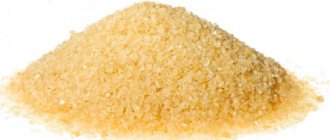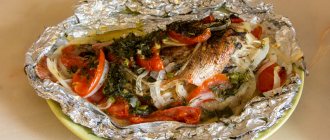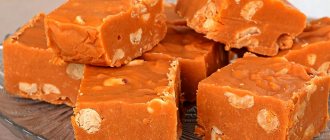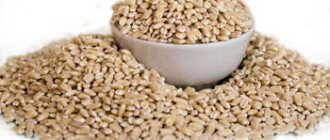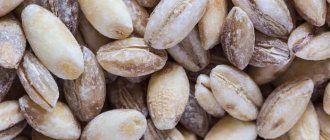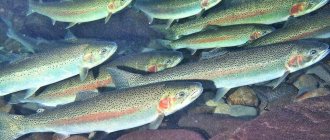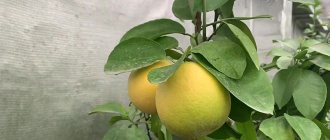What is healthier: pollock or cod?
The cold waters of the Pacific seas are home to a large number of cod fish (about 100 species), and among them there are both “folk” favorites and real exotics. Today we want to talk about what is healthier than pollock or cod, although it is difficult to talk about this, given that the first is widespread, and the “head” of the genus is more expensive, and on the shelves, under any cod fish, the less valuable pollock is often hidden. Most cod, with the exception of freshwater burbot, arrive on the shelves frozen, and it is difficult to tell the difference between a cut carcass, which is what scammers take advantage of.
Habitats
All codfish, except burbot, live in the seas. Burbot feels great in rivers and other freshwater bodies. Codfish inhabit the waters of the northern hemisphere; five of their species live in the seas of the southern hemisphere.
Most cod are found in the eastern part of the Atlantic, the Norwegian and Barents Sea. One cod thrives in the waters of the Baltic Sea.
Representatives of the family are found in the Mediterranean and Black Sea. Three species of this order live off the coast of New Zealand, South Africa, and South America.
Diet
Fish from the order Codfish are mostly predators. When young, they feed on bottom-dwelling invertebrates. These are crustaceans, worms, shrimp.
The codfish are growing and their diet is changing. It is now based on small fish. Often the prey of codfish are small representatives of their own family.
Thus, cod happily feeds on young pollock, and haddock actively eats blue whiting. Small representatives of the order, which include cod and gadiculus, are also predators.
The basis of their diet is plankton and benthonic crustaceans. But they try to diversify the menu, including fry and caviar of representatives of their squad. Cod fish are known for their cannibalism; adults happily eat their own young.
Spawning
Most codfish are adapted for laying eggs in salty sea water. Inhabitants of northern latitudes try to choose desalinated areas of the reservoir for reproduction.
There are species that leave the seas during spawning and go into rivers. Many codfish are considered sexually mature after 3 years of life, others begin to spawn only at 8-10 years.
Representatives of the family lay eggs without interruption for several years in a row. During one spawning, several million eggs are laid. But not everyone does this; for example, navaga has much fewer eggs - only a few thousand.
The spawning period is winter, or the end of winter. The water temperature during spawning is within 0 degrees. The emerging fry have two options - to stay in place, or with the help of the current to move across the waters of the seas and oceans.
Codfish are great travelers; they migrate throughout their lives. Their movements depend on natural factors - currents, food supply, water temperature.
Types of cod fish
Pacific cod
The average size is 40-80 cm, can grow up to 1.2 m. It is found in the Sea of Okhotsk, the Sea of Japan, and the Bering Sea, without long migrations. It has a very large head, begins to spawn in the fifth year, and lays millions of eggs. Life expectancy is up to 12 years.
Atlantic cod
This species is listed in the International Red Book and the Red Book of Russia. The average size of cod is 30-70 cm, there are individuals reaching 1.8 m. It is a predator; cod begins laying eggs at 8-10 years of age. It is considered very valuable because of its meat and liver.
Saida
Pollock is a schooling fish. Habitat: water column in the North Atlantic, may be near the bottom. The average size is 70 cm, can grow up to a meter. Migrates long distances in search of cool water. This is a beautiful fish that tastes like salmon.
Southern blue whiting
The maximum size of a fish is 0.5 m, and its weight reaches 1 kg. In the waters of the southern hemisphere it prefers to stay close to the surface of the water. Migrating from these places, it climbs to a depth of 0.5 km. Southern blue whiting is caught on an industrial scale.
Northern whiting
It grows slowly, the maximum length of the body is 50 cm, the average length is 35 cm. This predator, in addition to plankton, feeds on fry and small crustaceans. Northern blue whiting is caught on an industrial scale. The fish is found in the northeastern Atlantic, its habitat depth is 30-800 meters.
Pollock
Habitat: North Pacific Ocean, pollock loves cold water, the temperature of which ranges from 2 to 9 degrees. It stays at a depth of 0.5 km and comes out to shallow water during the spawning period. It spawns after 3-4 years of life. Can grow up to 50 cm in length.
Haddock
The body of haddock is compressed laterally, the fish lives closer to the bottom. The color of her body is silver, it is decorated with a black lateral line, the same spot located above the pectoral fin. The usual size of haddock is 60-70 cm. In addition to mollusks, worms, crustaceans, it loves herring caviar. They spawn at 3-5 years of age. It lives in the waters of the North Atlantic, and is fished in the North and Barents Sea.
Burbot
Lives in rivers and lakes of Asia, Europe, America. In Siberia, trapping is carried out on an industrial scale. It leaves for spawning in winter, when the reservoir is covered with ice. This is a nocturnal fish that does not like sunlight. Its average size is 60 cm, weight is one and a half kg. Some individuals can grow up to 1 meter, then their weight exceeds 20 kg.
Northern navaga
Inhabits the coastal zone of the Kara, Pechora, and White Seas. It may go into rivers to spawn. In this case, the process of spawning occurs only in salt water, in winter, at a depth of up to 10 m. The eggs stick to the bottom, the fry develop for 4 months. The average length of the fish is 35 cm.
Be careful, fish fillets: how not to be deceived when buying
In Germany, almost a third of the fish tested did not live up to their name on the label. A similar situation has developed in England, where cod and haddock are often replaced by pollock, pangasius and catfish, much cheaper varieties of fish.
Similar substitutions, alas, are observed in Russia. Rosselkhoznadzor also identifies cases of falsification during product inspections in stores. It is especially popular to replace cod fillet with cheaper pollock fillet.
Specialists from Rosselkhoznadzor, together with participants in the fish market, are trying to create a transparent, and most importantly controlled at every stage, system for the supply of fish to Russia, as well as a system of control over their own, Russian producers and suppliers. After all, the danger of such falsifications is not only that the consumer will buy products whose real cost is 2-3 times lower, but also that the falsified fish does not undergo proper veterinary and sanitary examination and may not be safe for the health of buyers.
Are there any contraindications
It has already been said about the possibility of fish accumulating toxic salts of heavy metals, which makes it especially dangerous for pregnant and nursing mothers.
Like many other marine life, hake can also cause allergic reactions in humans, which must be taken into account by possible consumers of this product.
Important! It is strictly forbidden for people with high acidity to eat hake dishes.
It is recommended not to indulge in hake for people with problems associated with bowel movements (constipation).
Selection of fillets
While market experts are preoccupied with trading schemes, how can a buyer know whether the seller is deceiving him? After all, in stores very often they offer us pink salmon under the guise of chum salmon, and trout is passed off as salmon.
Unfortunately, the buyer cannot distinguish one type of fish from another when the fish has already been cut. Of course, there are methods for detecting falsification, for example, protein analysis and DNA analysis are done in special laboratories, but these are expensive examinations for professionals.
You and I can only rely on the appearance and smell of the fish. That is, you need to pay attention to the location and shape of the fins, the presence of scales, the shape of the head and jaws - and all these signs do not work when you choose fillets.
Expert opinion
Svetlana Chebarova, Quality Director of the Quality Control Department of X5 Retail Group : “Even an expert with many years of experience cannot identify fish without skin. In this case, all that remains is to resort to laboratory methods for detecting adulteration of fish. Therefore, you need to buy fish in trusted places that you trust, and also educate yourself so as not to be deceived; for this there are information resources, for example, the “What is what” website, which was created by the Union of Consumer Market Participants (SUPR) to inform consumers about properties of goods".
Cod from a chain store turned out to be an unknown animal
Our reader Nina Gordenko contacted the editorial office of KP. A Muscovite, no less, said that a large chain store is cheating its customers. After all, under the guise of frozen cod, there is a completely different fish in the refrigerators!
“I now live in the capital, but I spent my childhood and youth in Vladivostok,” the woman said. – My father worked on a fishing trawler. I can unmistakably distinguish the taste of any popular fish. Previously, due to poverty, the family only ate this, dad brought food from the service. I recently bought packaged cod steaks at the store. My suspicions arose when I opened the package - somehow the fish looked wrong. The meat is too dark. I fried the cod and the taste was also not the same. Looks more like saithe.
For a cod steak, the meat is too dark, don’t you think? Photo: Vladimir VELENGURIN
The next day, the Muscovite went back to the store and asked the administrator for documents for the goods. But she was told that there were no papers. And they sent us to the company’s head office to get the certificates.
Whole fish selection
Of course, fillet is very convenient. Throw it in a frying pan and a hot dish for dinner is ready in 15 minutes; you can even cook it without defrosting. But it’s too difficult to buy a truly high-quality product, especially if we remember that fillets are often sold in an icy “glaze,” which can greatly increase its price.
It’s also not easy with frozen fish: it can be frozen, it can thaw and freeze again - and turn into a hard, inedible substance. It can be sold encased in ice or treated with chemicals.
Although a whole frozen carcass is still easier to “bite through”. After all, we can rely on the appearance of the fish, and distinguishing pollock from cod is much easier.
When purchasing chilled products, it is important to pay attention to the smell of the fish, the condition of its skin, the color of the fins and gills. It happens that the gills are removed from chilled fish - it is better not to take such fish, since it is by the gills that it is easy to determine freshness. They should be bright red in color, and only sturgeon (sterlet, beluga, sturgeon, etc.) have dark gills with a reddish tint. If you see gills that are grayish, brown, yellow, covered with spots or mucus, it means that the fish has been traveling around the shelves for a long time or has been poorly stored; in pond fish, such gills can be a sign of illness.
Svetlana Chebarova advises to always carefully inspect the fish, paying attention to every little detail. One of the most significant is the appearance of the fins; they should not be damaged. The scales on the fish should be intact, although there are exceptions, for example, during the fishing process, herring and mackerel lose almost all their scales. When choosing fish, it is best to rely not only on the eyes and nose, you need to touch the fish: in fresh fish, the mucus on the skin is clear and transparent, if the skin has changed color, becoming unnaturally yellow or gray, faded, if it sticks to your hands, it means it is fresh fish should have serious doubts.
The benefits of cod
- It is rich in vitamins and microelements that normalize the functioning of all systems of the human body. Its use strengthens the immune system, reduces the development of seasonal vitamin deficiency, colds and infectious diseases.
- Thanks to the large amount of protein, it is useful for people exposed to heavy physical and mental stress, and athletes.
- This is an easily digestible product that improves the functioning of the digestive system. The phosphorus it contains helps cleanse the body of harmful substances.
- Iodine improves brain activity and blood supply to the brain, and also prevents senile dementia.
- Magnesium, sodium, potassium and healthy fatty acids improve the functioning of the heart and blood vessels. Blood cholesterol levels decrease and blood pressure stabilizes.
- Cod ensures high-quality functioning of the nervous system . It is useful for stress, apathy, increased irritability, neuroses, and insomnia.
- The appearance of the skin, nails and hair structure improves.
- Phosphorus and calcium make bones stronger, strengthen cartilage tissue, and help the body recover faster from fractures.
- Iron helps normalize the hematopoietic system, regulates blood clotting, and prevents the occurrence of anemia.
- Vitamin E and other antioxidants protect body cells from free radicals and reduce the risk of cancer.
Cod contains pollock and haddock
Roskachestvo discovered false cod on the shelves of our stores. If you think that you are eating this diet fish, then you are deeply mistaken. It turned out that cheaper pollock and haddock were being sold under the guise of frozen fillets of this type of fish.
In recent years, cod consumption in our country has decreased by almost a third. At the same time, cheaper types of white fish, such as pollock, on the contrary, showed a slight increase, which is not surprising during the economic crisis. However, we must not forget about the value of cod and its special taste and dietary properties. The cooked fillet of this fish can become a real decoration for any table. One of the problems of the fish market is that it is almost impossible to distinguish cod fillets from pollock fillets in everyday conditions. And this can be taken advantage of by unscrupulous manufacturers who pass off cheaper goods as premium products. During the analysis of the results obtained, several facts of substitution of cod with cheaper fish were revealed. For example, manufacturers of products under the trademarks “Shturman KF”, “Kazhday Den”, “IP Zemlyansky”, “FISH House”, “ARSFISH” used pollock instead of the declared cod, and the manufacturer of the ARTFISH sample used haddock. The fact of substitution is considered a violation of the rights of consumers to reliable information about the product on the packaging. Information about these violations was transmitted to the relevant supervisory authorities.
Anisakis larvae were also found in fish of the IP Zemlyansky trademark. And although the likelihood of encountering live worm larvae in frozen fish is much lower than in lightly salted or pickled fish, this scenario should not be completely ruled out. The fact is that some parasites are quite resistant to the effects of cold and can remain viable even at sub-zero temperatures for up to seven days.
The indicator of parasitic purity is regulated by the current requirements of SanPiN: the presence of parasitic larvae in fish is not allowed, only in live form. The standard of the Russian quality system is stricter in this regard and does not allow the presence of parasite larvae, either alive or dead. Of course, dead parasites are not dangerous, but even from a psychological point of view, the fact of their presence does not bring pleasure.
We have already sorted out what you don’t need to buy, now about the pleasant things. Frozen skinless cod fillet under the Bay of Plenty brand is recognized as a high-quality product. The fish fillet cubes are clean, smooth, and dense. The consistency of the fish after defrosting is dense, but after cooking it is somewhat dry. The fish has a light cream color and a fishy smell after defrosting. The taste and smell after cooking are characteristic of boiled fish. Based on the results of a technical audit of the enterprise, including determining the level of product localization, this product confirmed its high quality and was certified with the right to be labeled with the Russian Quality Mark. Frozen skinless cod fillets under the trademarks “AGAMA”, “FF VARIANT”, “FROZEN at sea” are also recognized by experts as a quality product.
The products were also checked to determine the amount of frost. If the fish has been re-frozen, it will be noticeable when cooked. The meat becomes loose and dry. According to the experts, the consistency of all studied samples after boiling was tender and juicy, which means that not a single fish was subjected to re-frozen.
Which is healthier?
The question of which fish is more beneficial - hake or pollock, also torments visitors to fish markets and shops. Unlike the two previous types of fish, representatives of different (cod and hake) families are compared here. Hake is harvested both in the Pacific Ocean and in Atlantic waters.
Fishermen know that they need to deliver it to the shore as soon as possible, preferably frozen. This will better preserve the unusual smell and pleasant taste.
Hake is relatively discreetly colored. The belly is naturally light gray, as are the sides. The back is noticeably darker, colored gray, sometimes with a black tint. Hake is longer than pollock and has a wider tail and head. But the characteristic mustache under the lower jaw is missing. One of the hake's fins is relatively short, and the one closer to the tail is longer and has a hollow.
Pollock is inferior to its “oblong” counterpart in terms of nutritional value. It contains slightly less nutrients, and they are absorbed a little worse. This is why hake is valued by both nutritionists and specialists in the field of baby nutrition. The culinary qualities of this fish are also higher. To preserve them fully, you should not fry, but bake or steam the product.
The cost of 1 kg of hake is slightly higher than the cost of 1 kg of pollock. The latter is less caloric. It contains many fatty acids that the body cannot produce on its own.
By consuming hake, you can compensate for the deficiency of antioxidants. It helps prevent depression and other pathologies of the nervous system.
When choosing between these two fish, you must focus primarily on your own taste priority.
Some consumers complain that hake is too bland. But for those who tend to gain excess body weight, it is more beneficial. To save money, you can avoid eating fish every day. This regime is extremely important only for those on the Mediterranean diet.



